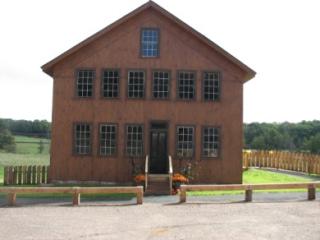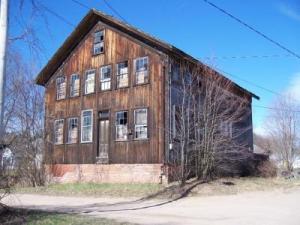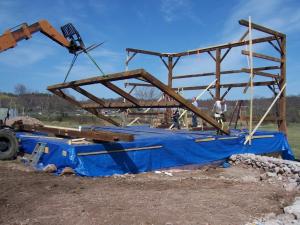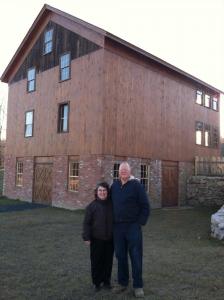Gillett Cigar Factory, Southwick

With the help of CPA funds and a group of determined local preservationists, the town of Southwick succeeded in a race against the clock to save what is probably the last surviving cigar factory in the Connecticut River Valley. Although it was in very good condition structurally, the building was scheduled for demolition to make way for a new pharmacy. With a grant from the local CPA fund, the building was carefully dismantled piece-by-piece and moved just down the road. In its new location on Southwick Historical Society property, the preserved factory joins the 1750’s-era Moore house to create a new heritage tourism destination – the Southwick History Museum.
 The Charles J. Gillett Cigar Factory and Warehouse was originally situated at Gillett’s corner, Southwick, where the extended Gillett family farmed for much of the 1800’s. Charles J. Gillett was a tobacco grower, who as early as 1860 – when he was just 24 years old – listed his occupation as cigar manufacturer. In 1872 he constructed the factory/warehouse building where his tobacco could be made into cigars. The structure featured many windows in its east end to provide light for the workers, primarily women, rolling the tobacco into cigars. Cigars made there were once sold throughout the United States under brand names including “Eastern Train,” “Old Iron King,” “Queen Ann,” “Sporting Friends,” and “Gillett’s Standard Cigars.”
The Charles J. Gillett Cigar Factory and Warehouse was originally situated at Gillett’s corner, Southwick, where the extended Gillett family farmed for much of the 1800’s. Charles J. Gillett was a tobacco grower, who as early as 1860 – when he was just 24 years old – listed his occupation as cigar manufacturer. In 1872 he constructed the factory/warehouse building where his tobacco could be made into cigars. The structure featured many windows in its east end to provide light for the workers, primarily women, rolling the tobacco into cigars. Cigars made there were once sold throughout the United States under brand names including “Eastern Train,” “Old Iron King,” “Queen Ann,” “Sporting Friends,” and “Gillett’s Standard Cigars.”
The Gillett factory became threatened with demolition in 2008 when the property was bought by developers with plans to build a pharmacy there. Members of the local Historical Commission and the Southwick Historical Society jumped into action and applied for CPA funds to acquire and move the building to land owned by the Southwick Historical Society for use as a museum. Supporters, led by Southwick Historical Commission member Barbara MacEwan, attended dozens of meetings, discussions, and planning sessions, and overcame seemingly insurmountable hurdles to pursue their goal.
As Michele Barker, Preservation Massachusetts’ Historic Preservation Circuit Rider for the area, said, “I was impressed with how the group stuck together through all the roadblocks [to the project].” And in the end, this perseverance paid off - Southwick Town Meeting voted to appropriate $300,000 for the project.

Perhaps the most harrowing moment came when the developer’s deadline for moving the building off-site suddenly tightened. This required project supporters to quickly switch plans from moving the structure whole to moving it disassembled. A contractor was hired to carefully disassemble the factory, place the parts in three trailers, and the building was moved and stored in pieces until it could be reassembled on its new site. The contractor hired for this job, Paul Cigal, was a former Southwick resident who recalled working on the property in his youth hanging up and taking down the fragrant tobacco leaves.
 Reconstruction began in September 2010, after all required permits were obtained.
Reconstruction began in September 2010, after all required permits were obtained.
The rebuilt structure retains 98% of the original frame and sills, and most of the window sashes and frames were restored. Most of the siding and flooring had to be replaced in order to maintain the integrity of the building, explained Lee David Hamberg, Vice President of the local Historical Society and Project Coordinator.
The factory is now open to the public as a museum, following a grand opening in October 2011 that was attended by project supporters, local municipal officials, State Senator Michael Knapik, and many other Southwick residents. According to Pat Odiorne, Chair of the Southwick Historical Society Board of Trustees, the new museum showcases an original windlass used to lift heavy crates of tobacco, as well as cigar frames, molds, and boxes. Other relics of Southwick’s agrarian past are also displayed at the museum, including equipment for ice harvesting, dairy farming, and poultry raising.

